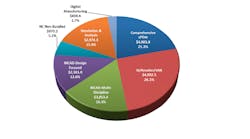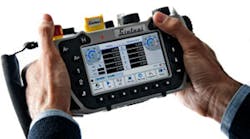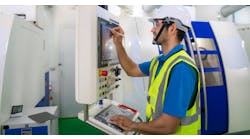SiemensPLM Software is gaining plaudits from the IT and engineering software crowd for its purchase of LMS International NV. “With the acquisition of LMS, we are expanding our portfolio of industry software in an area that is critical for many customers,” according to Anton S. Huber, CEO of Siemens Industry Automation Division, which includes Siemens PLM Software. “They will now be able to simulate, test, optimize, and produce their products in a unified, consistent data environment. This will make them faster, more efficient, more flexible, and more cost-effective.”
LMS International develops software for test and mechatronic simulation, particularly in automotive, aerospace, and other advanced manufacturing industries.
The estimated $865-million acquisition of the Belgian software developer is being seen as a landmark for product lifecycle management (PLM), one that Siemens stated will give it the means to develop “closed-loop, systems-driven” products, from concept and design to integrated test management.
Practically speaking, combining the capabilities of the two software environments would be significant for machinists and other manufacturers of engineered components and systems that supply Tier manufacturers or OEMs based on customer-supplied CAD programs. “It’s something our customers appreciate today and will even more fully appreciate tomorrow,” noted Chuck Grindstaff, CEO and president of Siemens PLM Software. “We are committed to investing both organically and through acquisitions to achieve our vision, which includes providing world class simulation solutions.”
Siemens emphasized the growing complexity of product development for manufacturers, pointing to the growing number of products that integrate mechanical systems, electronics, and software (i.e., mechatronic systems.)
LMS chairman and CEO Urbain Vandeurzen said his product line’s role in the Siemens PLM package would continue to focus on test and mechatronic simulation. “In combination with the entire Siemens PLM Software portfolio, we plan to further expand our position in the automotive, aerospace and other advanced industries,” Vandeurzen stated.
Increasing simulation accuracy
“The integrated solution will increase simulation accuracy,” Siemens PLM outlined, “which improves decision-making and enhances customers’ ability to design the product right the first time.” Siemens said decision-making processes would be supported with “deep and accurate virtual analysis” that is linked to physical models or articles.
SiemensPLM Software lists 7 million licensees and 71,000 customers for its product lifecycle management software and services. PLM software coordinates design and engineering developments with enterprise and MES objectives, within an organization and between supply chain partners. Siemens PLM explains that its strategy “unites the virtual and real worlds … integrating virtual product development with physical manufacturing.
Siemens PLM said incorporating LMS would allow it to provide a suite of virtual design, simulation, and physical performance testing applications that integrate all aspects of product development, “intelligently”.
Mechatronics is an interdisciplinary science that examines practical implications of mechanical design, electronics, computer engineering, control technology, and systems engineering. As such, simulating mechatronic designs requires data inputs from multiple platforms.
LMS software programs simulate production processes and collect and coordinate information on system dynamics and product structural integrity, for evaluation in terms of durability, safety, and power consumption. “With multi-domain and mechatronic simulation solutions, LMS addresses complex engineering challenges associated with intelligent system design and model-based systems engineering,” it states.
“By acquiring LMS we continue to deliver on our goal of providing the full breadth of product development solutions, from the virtual to the physical,” said Chuck Grindstaff. “This will enhance our core competencies by adding model-based simulation, design, test and measurement capabilities to both the virtual design and physical test process. Integrating the full environment gives our customers the ability to bring together information from the logical model, physical model and functional model to refine and optimize designs and measure results, which transforms decision-making in product development.








